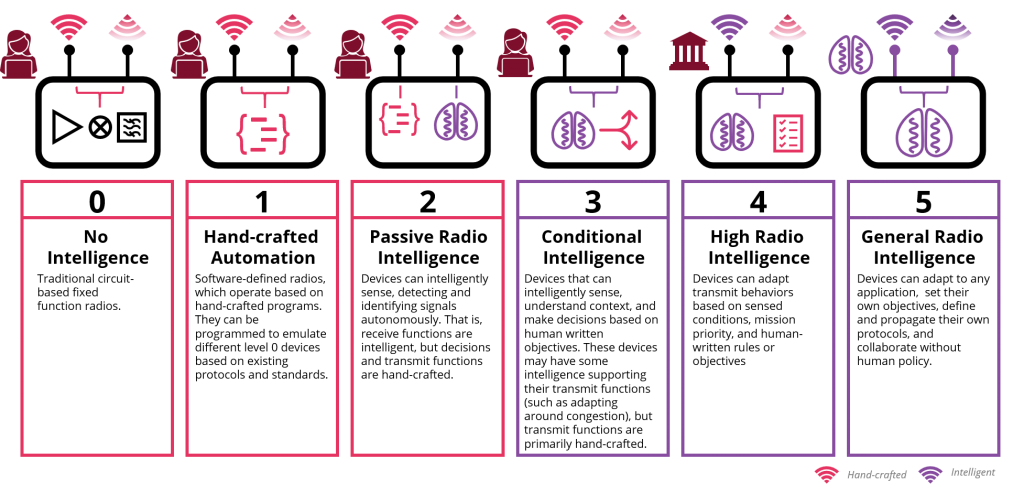5 Levels of Radio Intelligence
- Articles
- August 28, 2021
The creation of general intelligent radio technologies is an engineering challenge, requiring the development of a full stack of appropriate software, hardware, IP, machine learning techniques, and standards.
These radios will be very complex systems, resulting from an intricate set of algorithms built by integrating many machine learning techniques, deployed to devices that are capable of changing their performance at the hardware level to meet requirements that change in real-time. These devices must be aware, make decisions, and be prepared to act. These devices will need appropriate algorithms, training, deployment, and the right computational and radio infrastructure.
This challenge is significant, and not unlike the challenge of autonomous vehicles. To describe the race to intelligent radio, Qoherent uses a similar “5 levels of autonomy” system to describe intelligent radio technology.
In autonomous vehicles, these levels are used to describe how involved a human is with the operation of the vehicle. In intelligent radio, these 5 levels describe both the design process and the implementation of intelligent radio technology.

A level 5 autonomous vehicle is fully autonomous, there is no human involvement. The passenger enters the vehicle, and without prompting, the vehicle knows where they want to go, and the best route to take given key objectives such as fuel usage, distance, and time. The vehicle then transports the passenger safely, adapting to road conditions it did not prepare for in its planning.
A level 5 intelligent radio is similar, it has objectives it needs to achieve (transmit or receive information with another radio) which it has determined itself, and it autonomously determines how it will work towards that objective, and adapts as it needs to. If it needs to define a new protocol, it will, or it may choose to operate on an existing one. If it needs to teach other intelligent radios the new protocol, it can.
There is research in support of all layers of intelligent radio technology, but the current state of machine learning applied to physical layer radio that is ready for widespread adoption is level two. That is, machine learning applied to software-defined radios provides the infrastructure to power passive intelligent radios (e.g. for spectrum sensing applications) across many industries. Ongoing work within academia and industry has begun on higher levels, where radios are taught to adapt their transmit behaviors based on training.
